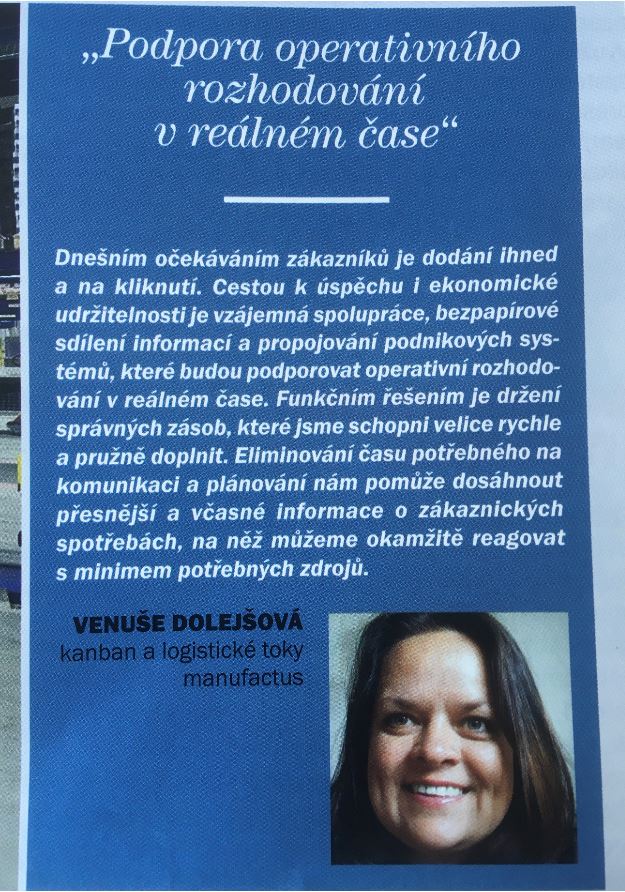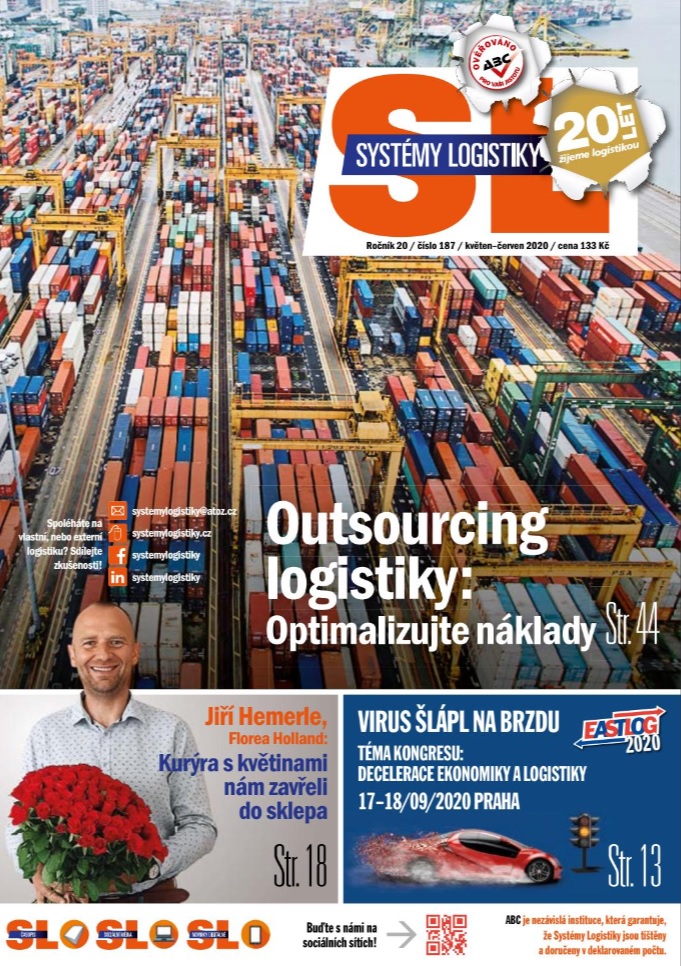2020 / 06 Managing the correct inventory article
Special Enclosure – Effective inventory managemment & IKS e-kanban comments
“Real-time operational decision”
Today’s customer expectations are immediate and clickable delivery. The path to success and economic sustainability is mutual cooperation, paperless information sharing and interconnection of business systems, that will support operational decisions in the real time. The IKS e-kanban functional solution is to hold the right stocks, which we can replenish very quickly and flexibly. Eliminating communication and planning time will help you to achieve more accurate and timely information on customer consumption, to which you can respond immediately with minimal resources requirement.
Managing inventory correctly versus managing correct inventory.
We mostly deal with the output results of high inventory, but we are overlooking to eliminate the reasons why we have such high inventory levels. It is a huge difference whether we manage inventory correctly or we are managing the right inventory. Based on our experience on our customers projects, we are repeating results, that 4% to 6% of inventory are never being used and another roughly 40% are representing “overstock”. This is unnecessary when inventory or processes are managed by pull principles with real-time information exchange.
This often means, that even a fully robotic production and automated warehouse system are inefficiently overloaded by unnecessary transactions of excess inventory. Fully automated warehouses are an expensive investment, but good in terms of standardization of work and timely support for subsequent processes. By minimizing of stock transactions time, we can stabilise and speed-up our material flow through warehouse, production and distribution.
Applying a holistic approach
We are facing challenging period of the pressure to change our usual principles of company growth management in the point of cooperation and prosperity as a whole. This is a new trend defined as “Holistic Logistics”. So far, we have divided everything into smaller, easily manageable blocks, fulfilling their smaller goals regardless of the prosperity of the whole. Holistic logistics requires the real cooperation of all participants in the logistics flow as one integral organism operating according to the customer’s consumption tact.
It all starts with product development, as what materials and technologies would be required. Already here we are complicating our lives by future sourcing and we may protect ourselves against the lack of equipment capacity by additional inventory. This is followed by the hunting for the lowest price of components, which can cause ordering in large batch of quantities and over long distances, which are requiring due to inflexibility or poor quality an additional extra pillow of inventory.
Sales team goal is to sell as much as possible and forecast future customer needs. Most of the customer orders are a large in volume with a one-time delivery, it is followed by a one-time work-order in the production and finally one-time stock expedition. This is the worst combination, when we pile-up finished products in the stock for a long time and at the same time we have blocked production capacity to become inflexible towards other customers. In addition, we have created enormous pressure on the supply of components, for which we also maintain higher stocks “just in case “. When combining these “individually successful” situations, the logistics department has no other choice, but to rent or expand its warehouses, which must be also equipped with the necessary resources.
The current logistics standards are evolutionarily unsustainable. In the future, the most expensive commodity would be “The Time and Flexibility” to respond to customer changes of it needs or trends. Today’s technology and internet coverage enable you real-time information exchange. Processes will be on-line interconnected between customers and suppliers to work together to manage common inventory and optimize this common process to speed-up the flow and minimize the resources required as whole.


